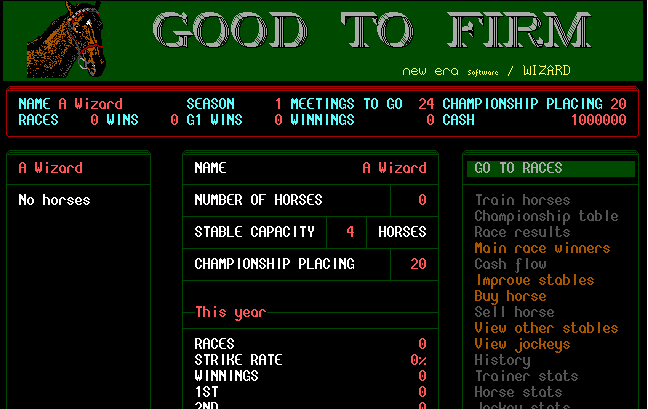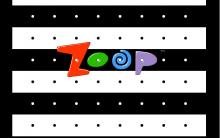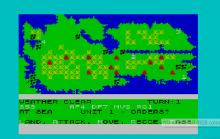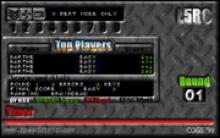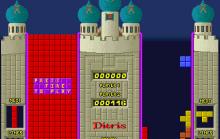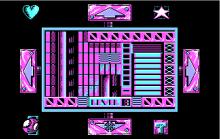Good to Firm
How to play Good to Firm
Each game uses different controls, Games can have combination of mouse,keyboard and Joystick.
Good to Firm Description
GOOD TO FIRM is a horse racing adventure based on the British flat racing season. All the big races, including the English Classics, are featured, as well as group races, handicaps, maidens and sellers.
--------------------------------------------------------------------------------
GOOD TO FIRM (c) new era software/wizard games of scotland ltd, 1994
--------------------------------------------------------------------------------
GOOD TO FIRM is a horse racing adventure based on the British flat racing
season. All the big races, including the English Classics, are featured, as
well as group races, handicaps, maidens and sellers.
Starting out with an empty stable with limited facilities, the object is to buy
horses and improve your stable so that you can compete with your rival trainers
in a bid for the championship title.
If you prefer just to gamble, you won't be disappointed. GOOD TO FIRM has an
enormous selection of 28 different types of bet.
GOOD TO FIRM offers continual seasonal play. If at first you don't succeed,
there's always next season, and if you do succeed, a buck says you can't make it
two in a row!
-------------------------------------------------------------------------------
TECHNICAL SPECIFICATIONS
-------------------------------------------------------------------------------
GOOD TO FIRM is designed to run on PC compatibles.
System requirements: VGA
580K free base memory
Because of the way it has been designed, GOOD TO FIRM takes advantage of faster
processors. A 286 is the minimum chip required, although we would recommend a
386 (or faster).
Installing to hard disk is also recommended, although the game will run from
floppy if you want. Unlike some of our competitors we pride ourselves on
keeping our coding compact. The entire game will use up less than a megabyte
(with one saved game).
To install GOOD TO FIRM to hard disk, type INSTALL
To run GOOD TO FIRM type GTF
(assuming you are in DOS: if you are in WINDOWS, exit first)
--------------------------------------------------------------------------------
STARTING THE GAME
--------------------------------------------------------------------------------
Throughout the game, the options available to you are displayed on the screen:
most selection is done using the arrow keys to find the desired option, then
enter to select it. Most other facilities are provided by using the function
keys (F1 to F10), the spacebar, Esc and the Ins and Del keys.
Answer the question "Do you want to load a saved game?" by hitting either the
Y or N key. If this is the first time you have played the game, then hit N.
Otherwise, unless you want to begin from scratch, hit Y, then enter the name
you gave your saved game and, hey presto!, you're back where you left off.
--------------------------------------------------------------------------------
THE SEASON
--------------------------------------------------------------------------------
The season lasts for 24 weeks, during which there is one race meeting per week.
The trainers' championship is won by whichever trainer has won the most prize
money at the end of the season.
The jockeys' championship is won by whichever jockey has ridden the most
winners.
--------------------------------------------------------------------------------
RACE TYPES
--------------------------------------------------------------------------------
GOOD TO FIRM has a variety of race types: GROUP RACES, CLASSICS, MAIDENS,
SELLERS, and HANDICAPS.
GROUP 3 races are for poorest quality of horse in the game.
GROUP 2 is for the up-and-coming, the has-beens or the mediocre.
GROUP 1 races are the most prestigious group races, offering most prize money
and attracting the top quality horses.
There is, on average, an equal division of horses and races for each group.
CLASSICS: one of the following: the 1000 guineas, 2000 guineas, the Oaks,
the Derby or the St Leger. These are the most prestigious races, and offer the
most prize money. Only the elite stand any chance of winning these.
MAIDENS: these are races solely for horses who have not won a race.
SELLERS: these are races in which the horses are sold by public auction
immediately afterwards. These are restricted to Groups 2 and 3.
HANDICAPS: these are races in which the horses are "handicapped" by having to
carry extra weight. The better a horse is thought to be, the more weight he has
to carry. In all other types of race the horses carry equal weights. Handicaps
only occur in Group 3.
All races are over distances varying between 5 furlongs and 2 and a half miles.
All races have conditions of entry. For example, the Derby is for 3 year olds
only and the 1000 guineas is for fillies only. A 2 year old colt would not be
permitted to enter either of these races.
Each horse has a recommended level at which he should race. Although he can
enter a higher-level race, he cannot enter a lower-level race. In other words,
if you own a Group 2 recommended horse, he can enter a Group 1 race but he is
prohibited from entering a Group 3 race.
--------------------------------------------------------------------------------
HORSES - AGES
--------------------------------------------------------------------------------
There are an equal number of 2 year olds, 3 year olds and over 3 year olds.
By and large most flat-racers peak at 3 and have very short careers, but it is
possible to carry on racing till around 12 years old. The pressure to sell is
enormous, as horses over 3 rapidly lose their value.
Horses of different ages are described as follows:
filly = female under 5
colt = male under 5
mare = female 5 or over
horse = male 5 or over
--------------------------------------------------------------------------------
HORSES - KEY FACTORS IN PERFORMANCE
--------------------------------------------------------------------------------
ABILITY
The single most important factor is the inate ability of the horse (in other
words, how fast he is), which fluctuates with age.
DISTANCE
Each horse has a particular distance it likes to race over, varying between
5 furlongs and 2 and a half miles (20 furlongs). The nearer it runs to its
preferred distance, the better it will perform. If you see one of your horses
out in front after 10 furlongs and then fading to finish in fifth after 14, the
indications are that a run over 10 furlongs would be a good idea.
GOING
Each horse also has a preference for certain ground conditions (called, the
going). Some horses like soft ground, others like it hard. Others like it
somewhere in between, and there is the occasional horse who doesn't care what
the ground is like.
FITNESS
The fitter a horse, the faster he will run. (see TRAINING)
WEIGHT CARRIED
In handicaps each horse is allocated a weight to carry. The minimum is 7 stone
7 pounds, the maximum is just over 10 stones. Obviously the less weight the
horse carries, the faster he will run.
COURSE PARTIALITY/FAMILIARITY
Some horses will prefer certain courses to others. This only makes a slight
difference to their performance, but is still significant.
--------------------------------------------------------------------------------
BUYING AND SELLING HORSES
--------------------------------------------------------------------------------
You can use the BUY HORSE option on the main screen to buy 2 year olds from the
horse sales. These are horses ready to race. They are sold by auction to the
highest bidder. Their abilities are based on those of their sire and dam (father
and mother), but there are no guarantees. Group 1 winners are more likely to
produce Group 1 offspring, but don't be surprised if your expensive young
hopeful never gets out of Group 2. Other traits, such as preferred distance and
preferred ground conditions, are also hereditary.
You can use the SELL HORSE option on the main screen to auction off any horse,
provided it has run a minimum of 4 races. You must set the minimum amount you
are prepared to accept, and if the bidding exceeds that amount the horse is
automatically sold. Entering a horse in an auction costs 100 per entry,
regardless of whether you succeed in selling your horse.
Alternatively, for Group 2 and Group 3 horses, you may enter them in SELLERS.
These are special races, after which the horses are auctioned off to the
general public. You can also buy from SELLERS: you have the advantage of being
able to study the horse's form and to see his career statistics.
At the end of the season you are offered money for all your horses. You are
under no obligation to accept, but remember, once a horse has passed the age of
3, his value will go down. A horse's value is based on prize money won relative
to races entered (if lightly raced then it is based on estimates). A horse who
had won no prize money as a 3 year old, would actually be worth more as a 4 year
old if he won a few races. So in certain circumstances it is worth holding onto
the less successful in your stable. You should also weigh up the amount of prize
money you would expect to win, against the amount being offered.
--------------------------------------------------------------------------------
TRAINING
--------------------------------------------------------------------------------
The training is primarily concerned with improving and maintaining fitness.
You may set each horse's daily training routine, from the TRAIN HORSES option
on the main screen.
Initially you want to get your horses up to peak fitness (100%). They will be
out of condition after their close season break. The harder the training
(represented by intensity) and the longer (duration), the quicker they will
become fit. The downside is that the more intense and longer the training, the
more likely they are to succumb to injury.
The default setting of 50% intensity for 3 hours will maintain the current
fitness level. To improve it requires longer or more intense training. Less will
result in a deterioration in fitness.
Running in races also improves a horses fitness.
Hard training and/or lots of racing will result in a decline in fitness. The
horse will be too tired to be properly fit. Less frequent racing and less
arduous training will improve your horse's condition. A complete rest mid-season
can often work wonders..
If sufficiently over-raced, horses can become exhausted, in which case there is
no remedy but to let them rest till next season. Stamina improves with age: a
rough guide as to the number of races you can expect to enter per season is as
follows:
2 year olds - 8 races
3 year olds - 12 races
over 3 - 16 races
(these figures are no more than a guide, as no two horses are the same).
This is quite generous, so you shouldn't encounter too many problems. It will be
obvious when a horse has had enough racing for the year - his fitness will
rarely, if ever, exceed 60%. There is nothing to stop you continuing to race an
over-raced horse, but his chances of winning are slim.
Intensity - this varies from 0 to 100%
Setting intensity to 0 means the horse is resting.
Duration - 0 to 6 hours.
Setting duration to 0 means the horse is resting.
Setting intensity to 100 and duration to 6 will improve the horse's fitness
markedly, but the risk of injury is very high and it is not recommended. An
injured horse cannot train or race.
You can also set the distance you are preparing your horse to race over. As with
the actual races, this varies from 5 furlongs to 2 and a half miles. Your horses
will all default to 1 and a half miles. Training your horse over the distance
he is best suited to, will ultimately make him a much better horse. Training
him over a distance a few furlongs out will have a small effect. Training over
completely the wrong distance will have a slightly detrimental effect (in
athletic terms it would be comparable to Carl Lewis training for the marathon or
Liz McColgan training for the 100 metres). None of this has any direct effect on
the horse's fitness: it simply affects his long-term ability.
Training is done automatically and updated every week on the basis of your
current selections. You only need to select the TRAIN HORSES option from the
main screen if you want to alter a horse's training schedule.
--------------------------------------------------------------------------------
INJURIES
--------------------------------------------------------------------------------
All horses are susceptible to injury, but the risks can be minimised by taking
care not to over-train or over-race your horses.
Injuries are never career-ending, but on occasion they can last for a third of
the season. Most are relatively short, however, and are not much more than an
expensive nuisance.
Treatment is automatic, but is not free. Vet bills have to be paid.
--------------------------------------------------------------------------------
JOCKEYS
--------------------------------------------------------------------------------
The jockeys all have different abilities, which you have to try and figure out.
Observing his statistics is the best way of gauging a jockey's talent. It is not
foolproof, though. The jockeys with the best stats will tend to get the best
rides, and therefore be more likely to win anyway! It is worth experimenting. A
good jockey can make the difference between winning and coming last.
Jockeys' pay demands are quite varied and the top jockeys are very expensive.
If you think you have a sufficiently good horse you can choose a significantly
worse jockey who costs less than a top-notch rider and still win. It's a matter
of weighing up the pros and cons and deciding what risks you are prepared to
take.
Jockeys can be ruled out of a meeting through injury or suspension.
Jockeys' weights are only of significance in handicaps. In normal races all
horses carry the same weight (9 stone). For example, a jockey weighing 8 stone
2 pounds will have an extra 12 pounds on board to make up the difference. In
handicaps, though, each horse is allocated its own weight to carry, dependent
on previous performances. So, if your horse is due to carry the minimum 7 stone
7 pounds, you are over-handicapping it by hiring a jockey who weighs 8 stone.
--------------------------------------------------------------------------------
MONEY
--------------------------------------------------------------------------------
You should find it quite easy to stay solvent, but just in case...
You will be allowed a generous overdraft (on which interest is charged). If you
can't see your way out any financial black hole you may have inadvertantly
dug for yourself, try selling a horse or two. If you don't have any to sell,
you may as well start a new game (you still won't have any horses, but you will
have some money).
Income and expenditure details are given are given on the weekly cash flow
statement.
Money will come in on a week to week basis from prize money, betting wins and
horse sales.
Expenditure is also weekly and should be self explanatory. A few points to note:
- the larger your stable, the greater the running costs.
- entry fees are set at one fiftieth of the prize money on offer.
--------------------------------------------------------------------------------
OFF-COURSE BETTING
--------------------------------------------------------------------------------
Before each meeting you can go to the betting shop. From here you can place any
of 16 bets involving selections from different races. These bets are all
accumulators.
For anyone who doesn't know what an accumulator is, here's a brief explanation.
You've chosen a treble - 3 horses to win 3 different races - and placed a tenner
stake. The first horse wins at 5/1, the second at 4/1 and the third at 6/1.
You win 50 from the first horse (10*5) plus your original stake, which then
becomes your stake for the second horse. So you have 60 on him winning at 4/1,
(60*4) which is 240 plus your stake of 60. You now have 300 on the third horse
at 6/1, which is 1800 (6*300), plus the 300 stake. Your final winnings comes to
a grand total of 2100.
If you want to bet on accumulators, then select SET OPTIONS from the main
screen and turn on the off-course bets option (it defaults to off at the start
of the game to keep things simple).
The bets are:
Double: a 2 horse accumulator (1 bet)
Daily double: a double, but the 2 horses selected must be in the 1st 2 races of
the meeting. Any winnings has 25% added to it. (The idea is to get people to
the track early, hence the 1st 2 races).
Treble: 3 horse accumulator (1 bet)
Trixie: 3 doubles and 1 treble (4 bets)
In other words you are placing 4 different bets simultaneously. For example,
you want a treble on Quip Face in the 3:15, Murdoch in the 4:30 and Haydock in
the 5:00. But you're not convinced that all 3 will win. You want to hedge your
bets a little by choosing any 2 to win. So you want a double on Quip Face and
Murdoch, Quip Face and Haydock, and Murdoch and Haydock. A trixie combines all
these options for you. Because it is 4 bets you have to pay for each bet. 10 on
a trixie would cost you 40.
Patent: a Trixie plus 3 singles (7 bets)
If any single winner was chosen, you win.
Fourfold: 4 horse accumulator (1 bet)
Yankee: 1 Fourfold, 4 trebles and 6 doubles (11 bets)
Lucky 15: a Yankee plus 4 singles (15 bets)
Fivefold: 5 horse accumulator (1 bet)
Canadian: 1 fivefold, 5 fourfolds, 10 trebles and 10 doubles (26 bets)
Sixfold: 6 horse accumulator (1 bet)
Heinz: 1 sixfold, 6 fivefolds, 15 fourfolds, 20 trebles and 15 doubles (57 bets)
Sevenfold: 7 horse accumulator (1 bet)
Super Heinz: 1 sevenfold, 7 sixfolds, 21 fivefolds, 35 fourfolds (120 bets)
35 trebles, 21 doubles
Eightfold: 8 horse accumulator (1 bet)
Goliath: 1 eightfold, 8 sevenfolds, 28 sixfolds, 56 fivefolds, (247 bets)
70 fourfolds, 56 trebles, 28 doubles
--------------------------------------------------------------------------------
ON-COURSE BETTING
--------------------------------------------------------------------------------
Immediately before each race begins, you can place bets with the on-course
bookmakers for that race.
There are 12 types of bet available. A brief description of each follows:
WIN - your selection must finish first. (1 bet)
PLACE - your selection must finish first or second (2 bets)
(or 3rd in a handicap of 8 or more runners)
FORECASTS (predicting first and second in race)
STRAIGHT forecast - Horses must finish first and second in (1 bet)
selected order
REVERSE forecast - Horses must finish first and second in (2 bets)
ANY order
3 HORSES ALL WAYS - Select 3 horses, 2 of which must finish (6 bets)
first and second
HORSE WITH FIELD - Your selection must win; any other (5 bets)
runner may finish second
HORSE 2nd TO FIELD - Your selection must finish second (5 bets)
behind any winner
TRICASTS (predicting first,second and third)
STRAIGHT tricast - Select 3 horses to finish first,second (1 bets)
and third in selected order
3 HORSES ALL WAYS - Your 3 selections must finish first, (6 bets)
second and third in any order
2 HORSES AND FIELD - Select first and second in correct (4 bets)
order with any other horse to finish third
HORSE,FIELD,FIELD - Select the winner, any other horses may (20 bets)
finish second and third
4 HORSES ALL WAYS - Select 4 horses. Three of your selections (24 bets)
must finish in the top three in any order
You can place 1 bet of any type. Each stake can be individually set.
Any bet can be made void by pressing Del and modified by reselecting that bet.
--------------------------------------------------------------------------------
ENTERING RACES
--------------------------------------------------------------------------------
You are allowed to enter as many races as you like from the 10 races provided
each week. You can enter as many horses per race as there is room for - each
race is limited to a maximum of 10 entrants.
To enter a horse in a race, place the bar over the horse in question. Then
find a suitable race (use the spacebar to view the races open to that particular
horse) and press enter.
You must then select a jockey. Those who already have a ride cannot be selected,
neither can those who are suspended or injured.
An injured horse cannot be entered.
A horse must meet the race conditions to be entered. For example, fillies cannot
enter colts only races. 2 year olds cannot enter 3 year old races, etcetera.
Once a horse has been entered it can NOT be withdrawn.
You can jump to the races (or off-course betting, if you have that option set)
at any time by pressing Esc or selecting CONTINUE from the ENTER RACES screen.
--------------------------------------------------------------------------------
WATCHING RACES
--------------------------------------------------------------------------------
You can choose to watch the whole race, the last furlong, or just the finishing
post. In any case, the race finishes when 3 horses have crossed the line.
When watching the race, the spacebar jumps you to the last furlong. Press it
again and it jumps to the finishing line.
Ins toggles the backgrounds on and off. This corresponds to the race backgrounds
on the SET OPTIONS menu. If you have a slow machine and the horses are not
running particularly smoothly, this will make a difference. You'll still see
the race, but the background detail will be missing.
All your own horses have their name and number highlighted. Since there are no
draw advantages, your own horses will always be drawn in the outside stalls.
You can follow their progress during the race much more clearly than if they
were stuck in the middle of a tight pack or hidden from view on the rails.
If you don't want to watch every race, you can turn off the watch all races
option on the SET OPTIONS menu: you will then get to see only races involving
your own stable, races in which you've placed bets and the main race. You will
still get the results from every race.
--------------------------------------------------------------------------------
PRINTING
--------------------------------------------------------------------------------
Most screens you would want to print can be instantly printed by hitting the F9
function key. These include: the championship table, trainer stats, jockeys
stats, horse stats, main race winners, buying+selling history, all seasonal
histories, cashflow, race results (from main menu and from the form guides).
--------------------------------------------------------------------------------
THAT'S ALL FOLKS....
--------------------------------------------------------------------------------
GOOD TO FIRM (c) new era software/wizard games of scotland ltd, 1994
--------------------------------------------------------------------------------
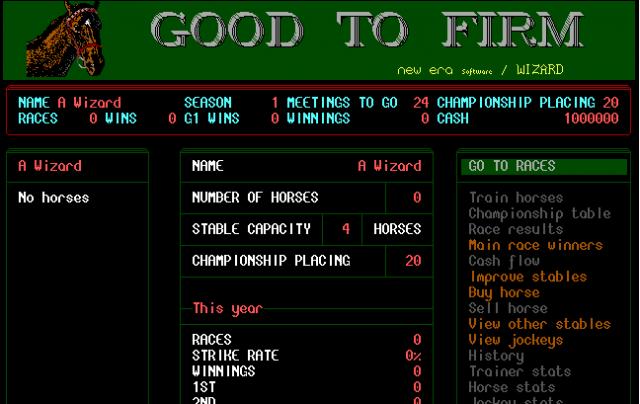
Good to Firm - additional information







